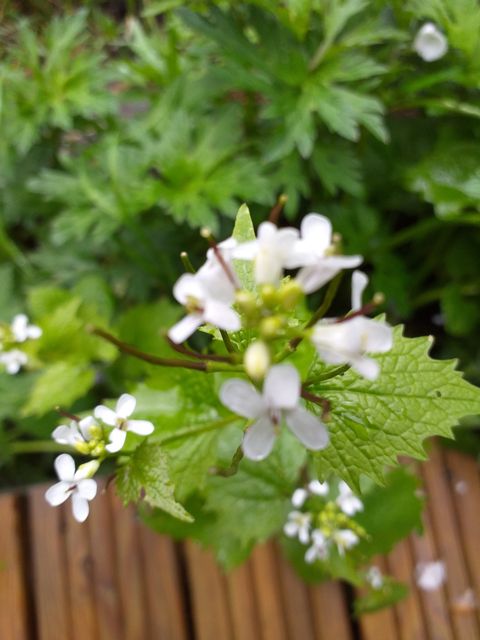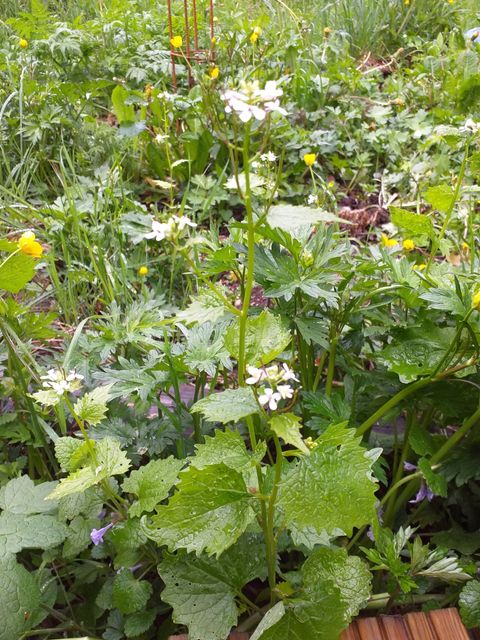OUR
FOREST
GARDEN
Welcome to our forest garden project.
You do not need several acres of land to plant and grow a forest garden, a small plot is suffice to grow food for your family all year round.
Jenni has spent many hours researching, finding and starting the project, which she has shared on her VLOG and now our website.
GARDEN INFORMATION
- Plot size - 1400 sq M
- Alitude - 650m
- Climate Zone - 5
- Soil - Poor soil on bedrock 50 cm depth
THE GARDEN STORY
This week, as I am sitting in my writing hut nestled at the back of my garden with the door open, sun warming the air and spring birdsong filling my ears, I am going to share another passion with you.
My forest garden project.
A few years ago, we wanted to move to a smaller house with land so I could grow more fruit trees. While we were searching and waiting for finances to work out, I researched growing fruit trees and somehow along the way I stumbled into Martin Crawford’s Forest Garden. Not literally but on youtube.
Continue reading on Jenni's Blog >>
List of Services
-
Why No Dig ? Write a description for this list item and include information that will interest site visitors. For example, you may want to describe a team member's experience, what makes a product special, or a unique service that you offer.
List Item 1 -
Gallery Write a description for this list item and include information that will interest site visitors. For example, you may want to describe a team member's experience, what makes a product special, or a unique service that you offer.
List Item 2 -
Mason Bee Write a description for this list item and include information that will interest site visitors. For example, you may want to describe a team member's experience, what makes a product special, or a unique service that you offer.
List Item 3
OUR EDIBLE PLANTS
Over the last two years Jenni has spent hours watching and learning about perennial plants for our forest garden. Here are some, we will add more as the year progresses.
GARLIC MUSTARD
I’d like to introduce you to a plant we didn’t sow into our garden and in fact for many years we it pulled up and dumped in the compost not knowing how nutritious and tasty it was. We called it a weed in our ignorance, now it has a name and a place in our diet.
This plant is Garlic Mustard – Alliaria petiolate.
It is native to Europe, western and central Asia, north-western Africa, Morocco, Iberia, the British Isles, Scandinavia, northern Pakistan and Xinjiang in western China. In these countries it does no harm to other plants.
However, in The US the chemicals from its roots harm the fungi which are beneficial to US trees.
It is happy in many different soils and living conditions, but this does effect it’s potency. The dryer the soil the more bitter it is.
Identifying
It is easy to identify as there are no other plants similar once it has grown a stem.
It has three leaf shapes. The lower leaves are rounded, the middle less so and the top leaves are triangular. The leaves are alternate up the stem and near the top of the plant new shoots grow between the stem and leaf. These produce flower and then seeds.
The flowers are tiny and white with four petals in a star shaped pattern.
Crush the leaves and they have a garlic tang, again this varies in strength.
Nutritional value –
Garlic mustard contains fiber, Vitamin A, E, C, B-carotene, Calcium, Zinc, Mangonese and Iron, Omega-3 Fatty Acids, copper as well as cancer preventing chemicals – isothiocyanates and allyl sulfides.
Wow, what a lot of goodness in a tiny package.
Eating Garlic Mustard
Leaves –
If it is not bitter add the leaves raw to salad
If too bitter for your liking cook for a few minutes in butter – yum. Or put in boiling water for about 5 minutes.
Add to soups, stews, use as a leaf green like kale.
Roots –
Tastes like horseradish – strength varies.
Seeds –
Collect on a dry day, store and use as a pepper substitute.
A Recipe to try -
Garlic Mustard Pesto
List of Services
- Black chokeberry
List Item 1
It is a branching shrub with glossy dark green leaves that take on a red color in the autumn; it grows well in the sun and part-shade, forming clumps by means of stems rising from the roots, its flowers are white or pink, they appear at the end of spring and produce black fruits in September.
- Beurré Hardy
List Item 2
Beurré Hardy has a very melting texture and is fragrant with a rose-water perfume. It produces good, regular crops and is a very hardy, vigorous tree. Although it is slow to bear fruit, it has resistance to scab. Pollination group 3. Season of use November to December
- Perennial Leek
List Item 3
This special variety produces baby leeks around the base, so when you harvest the mama leek there are transplants ready to pop back in for your next crop. Rather than a patch of leeks that are all ready to dig at the same time, you end up with a demographically-diverse patch of leeks .
USEFUL BOOKS


